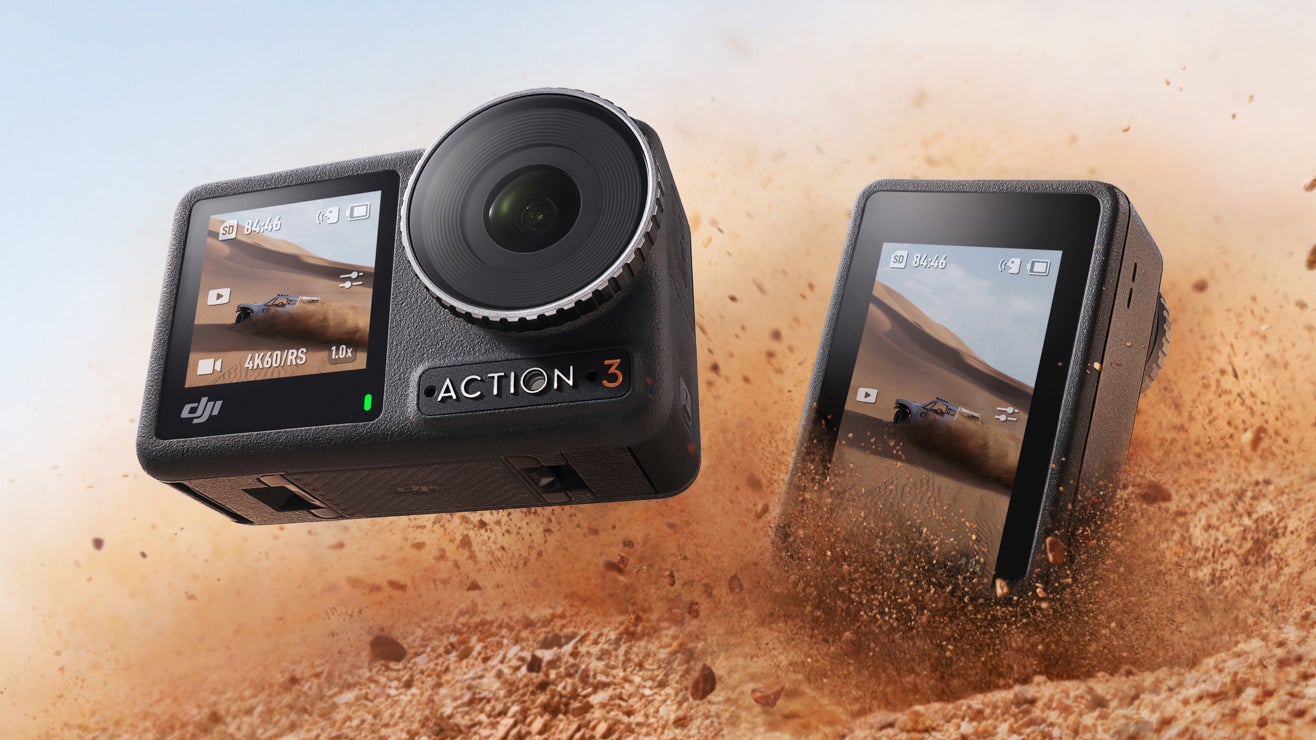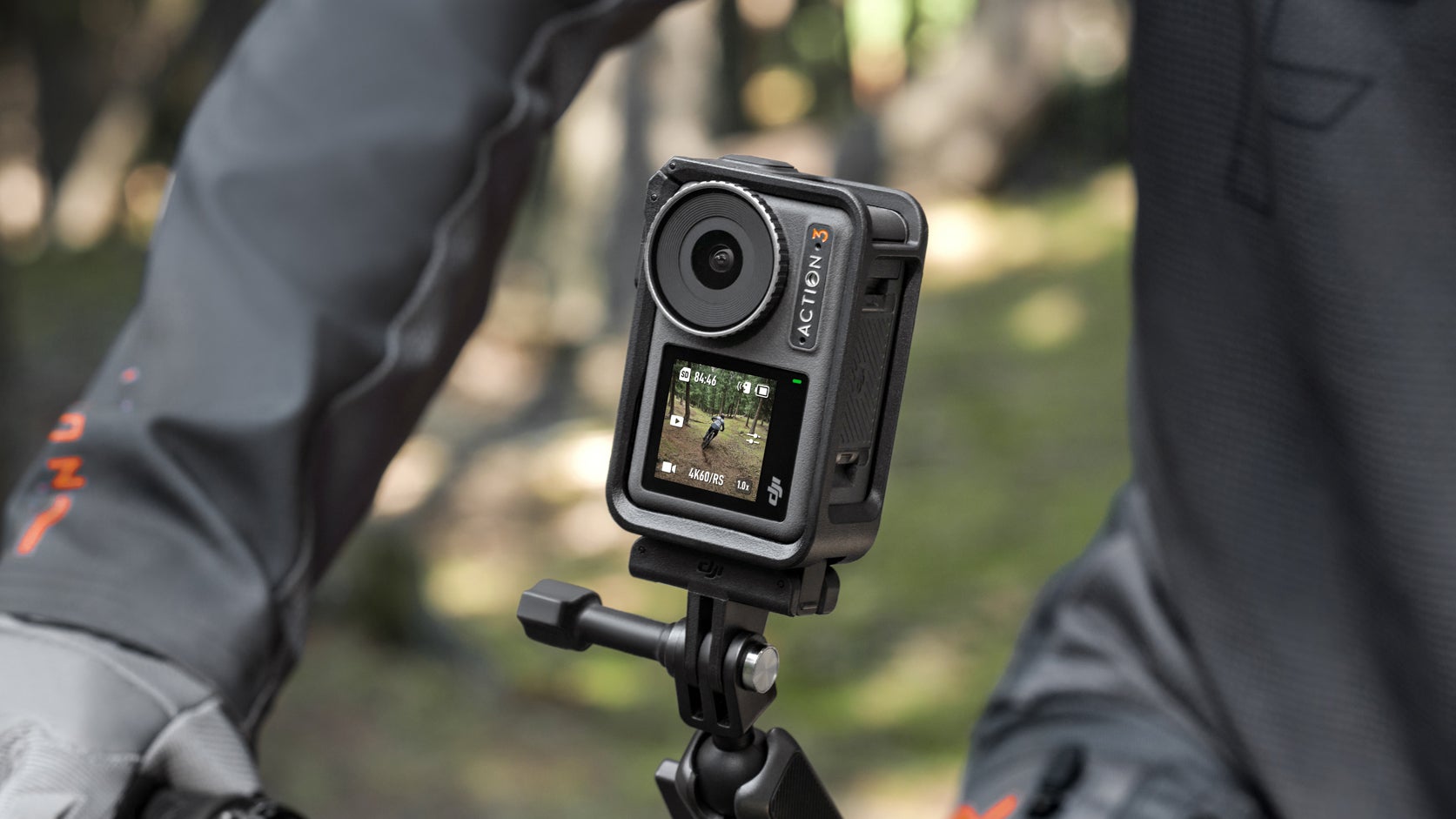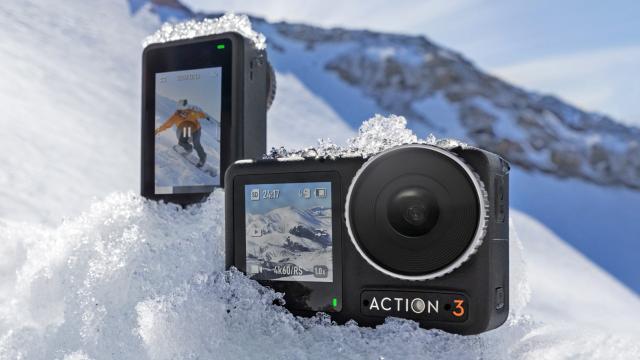Although GoPro has strongly cemented itself as the defacto brand name when it comes to tiny mountable cameras that can take a beating, DJI has delivered some stiff competition in this space over the past few years, and with its new Osmo Action 3, it’s returning to a tried and true design that has more or less defined the action camera.
If you’re going to go after a brand like GoPro, you need to deliver something new and innovative to your device. So back in 2019, not only did the original DJI Osmo Action bring the company’s excellent image stabilisation capabilities, developed for its drones, to an action camera, it also paired a large screen on the back with a second screen next to the lens on the front for easier framing of selfies and videos — a standard feature for GoPros now, too.
Two years later, DJI completely reimagined its action camera with the modular Action 2 that broke the device up into a collection of tiny cubes that magnetically connected to each other to expand and customise its functionality for different shooting scenarios. Need more battery life? Slap on a magnetic battery pack. Want to be able to see yourself while filming? Add the front-facing screen module.
The Action 2 featured a novel design, but one that came with some definite drawbacks. Recording capacity was limited when using just the tiny camera on its own, and while that main module was waterproof, the extra modules that boosted battery life and recording capacity weren’t, requiring an added case when there was a risk the hardware could get wet. It also tended to overheat faster than most action cameras: limiting how long it could record for.

The new DJI Osmo Action 3 hits the reset button and returns to the familiar design of the first model, and fixes some of the issues with the Action 2 in the process. The Action 3 pairs a 1/1.7-inch sensor that can capture 4K footage at 120 fps with a 155-degree super-wide angle lens, stabilised through one of three different modes: RockSteady 3.0, HorizonBalancing, and HorizonSteady — although the aggressive performance of that last option does result in a reduced resolution and more limited field-of-view.
The Osmo Action 3 is powered by a 1,770 mAh “Extreme Battery” that DJI promises will keep the camera running for up to 160 minutes and charges from 0 to 80% in “as little as 18 minutes,” and 0 to 100% in about 50 minutes, thanks to built-in support for the PD 3.0 PPS fast-charging protocol. And this time around, users will actually be able to take full advantage of that extended run time as the Osmo Action 3 also includes an “improved heat management system” so that it can continuously record at 4K/60 fps until the battery is dead, or it runs out of storage space. DJI promises overheating issues are a thing of the past.

Natively waterproof to a depth of 16 meters without the need for an additional case or housing, the Osmo Action 3 offers accessories for shooting in both a widescreen orientation or the cursed portrait mode for those targeting social media with videos of their extreme exploits. It also brings back the front-facing screen of the original Osmo Action camera, but on the Action 3 it’s now a touchscreen, allowing users to make settings adjustments while framing themselves for selfie videos.

Three microphones are built-in to improve audio quality and reduce wind noise, while external mics can be connected using a 3.5mm to USB-C adaptor cable. Users can also control the camera through voice prompts, which makes using it on your own without a dedicated video crew a lot easier, and the camera supports wifi livestreaming at resolutions of up to 1080P/30 fps.
One of the other big complaints with the DJI Action 2 was its $US400 ($555) price tag that quickly jumped to $US519 ($720) for a bundle that added the very useful front-facing screen module. The new DJI Osmo Action 3 starts at $US329 ($457) for a “Standard Combo” bundle that includes the new Extreme Battery and several mounting accessories, which is about $US20 ($28) cheaper than DJI’s first action camera. For those wanting even more battery life, an “Adventure Combo” is also available for $US439 ($609) that includes three batteries, and both are available to order starting today.
